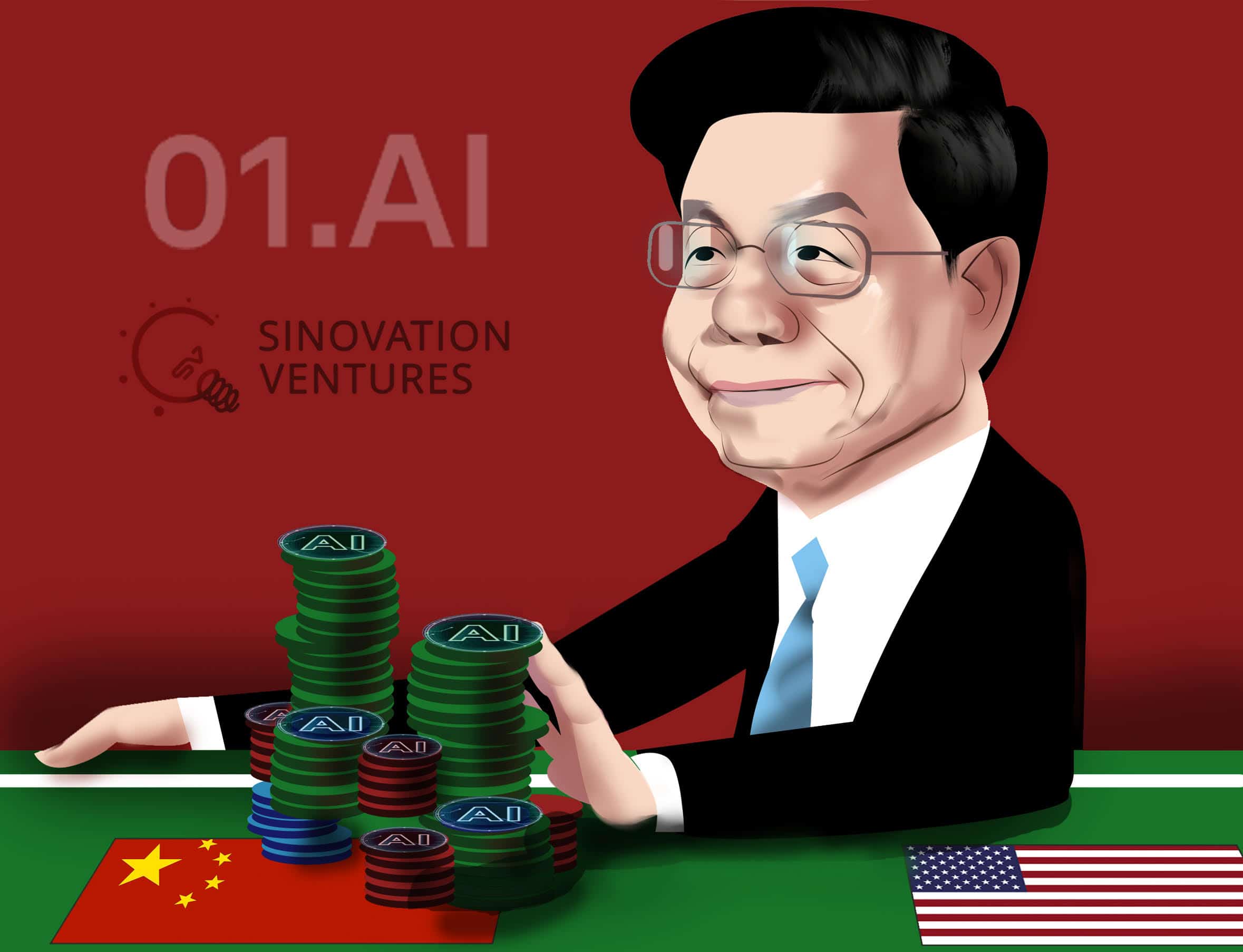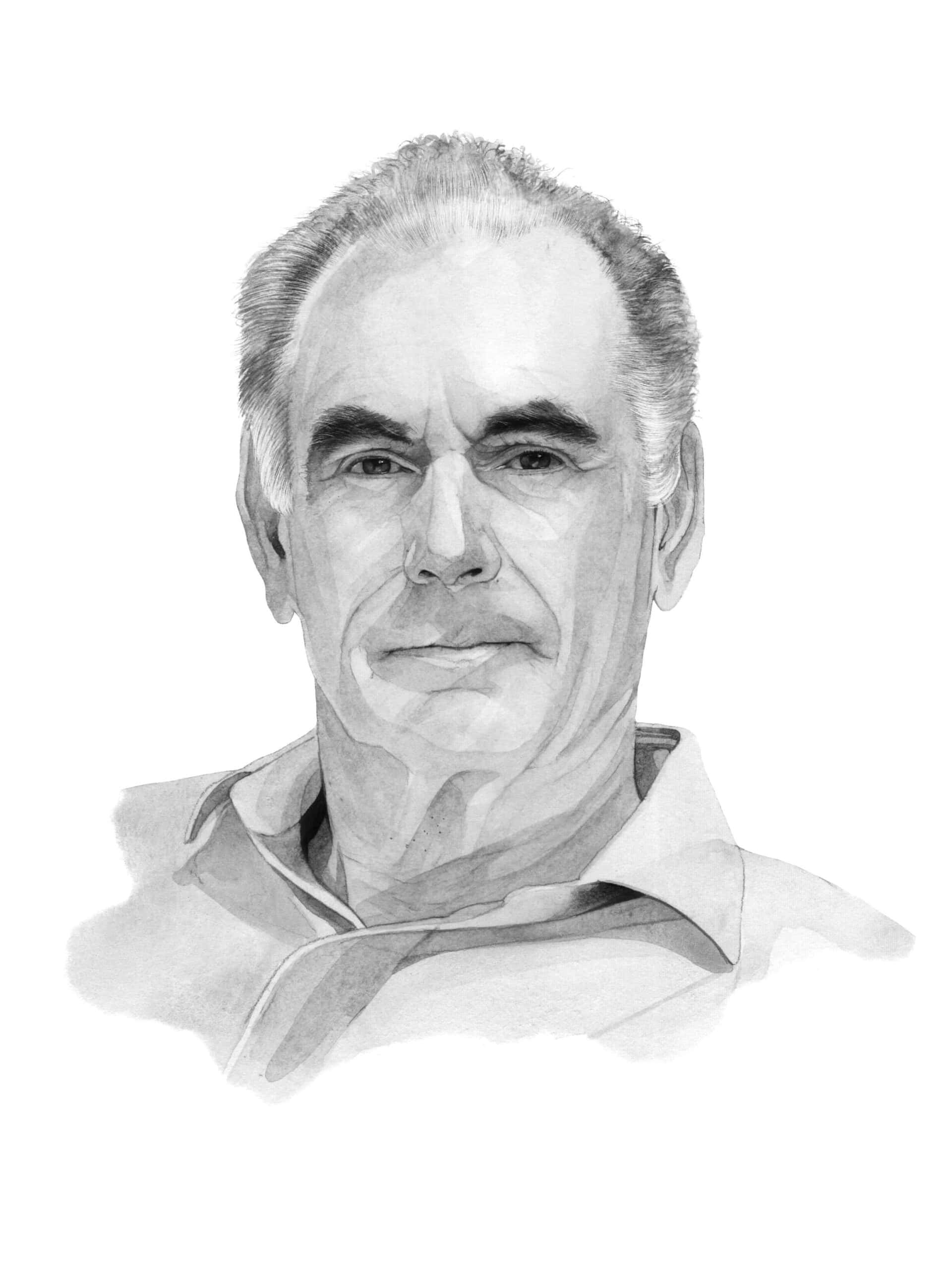
In 2002, He Rongming set off for a globe-trotting technology tour. Flanked by a team of engineers from his newly formed company, Shanghai Micro Electronics Equipment (SMEE), the then-40-year-old chief executive headed to Europe and the U.S. in order to learn all he could about photolithography, a crucial technology for manufacturing the semiconductor chips used in modern electronics.

Western and Japanese companies had been developing their lithography machines going back to the 1950s, and China’s government had decided the time had come to build its own. The year of He’s tour, the technology was added to China’s 863 program, a government funding plan for strategic technologies, and together with Shanghai’s municipal government, the Ministry of Science and Technology set up He’s company to spearhead the efforts.
But even during the height of “engagement,” with Western companies welcoming He, they weren’t exactly encouraging of SMEE’s goals.
“When I mentioned that China wanted to develop our own lithography technology, the expressions of the foreign experts showed not just surprise, but even disdain and contempt for us Chinese scientists,” a graying He recalled years later. “A senior European expert told me gravely: ‘So China wants to do lithography — even if we gave you a full set of design plans, you still couldn’t do it.’ At that time, the damage to my self-esteem was very great.”

Still, SMEE’s engineers attempted the impossible, and He remembers the moment when one of his employees called him to report the first successful use of a lithography device.
“Five years of painstaking efforts in an instant turned into a kind of accomplishment for us, so thinking of it now is still very moving,” He, wiping tears from his face, said in a 2020 interview with China’s state broadcaster.
The misty-eyed tale makes for a tidy foundational story for SMEE — one that slots neatly into aggrieved narratives of China overcoming yawning technological gaps through hard work and innovation.
But what He’s story doesn’t reveal is that, while SMEE has made progress in developing China-made lithography machines, it still lags far behind world-leading Dutch firm ASML Holding, as well as Japanese firms Nikon and Canon. As Li Jinxiang, deputy secretary general of the China Electronic Production Equipment Industry Association, noted in August, “Not a single chip-making production line in China has equipped a China-made lithography system — most of them are only used in academic research.”

It’s difficult to overstate what SMEE’s failure thus far means for China. Since October of 2022, the U.S. and its allies have increasingly cut China off from importing the most high-end chips — those used, for instance, in artificial intelligence applications or fusion energy research — as well as the advanced lithography machines China would need to make its own. In order to compete in the 21st century, China needs to develop its own, domestic semiconductor industry, and lithography machines are seen as the key “choke point” to overcome.
A human red blood cell is around 7,000 nanometers wide… We’re talking about atomic level engineering.
John Lee, Director of the consulting firm East West Futures
“There are a lot of people [in China] now that are bought into the idea that SMEE needs to succeed,” says Paul Triolo, Associate Partner for China and Technology Policy Lead at the consultancy Albright Stonebridge Group. “[The U.S. export controls] have massively incentivized the domestic industry to work together in the whole tool sector. It all changed sort of overnight.”

Indeed, SMEE was under-the-radar before, as Chinese national champions like Huawei and SMIC took most of the heat in the ‘chip wars.’ But in December 2022, the U.S. added SMEE to its Entity List, which restricts what U.S. companies can export to it. As the U.S and its allies broaden the scope of their assault, SMEE has emerged as the critical variable in China’s effort to domesticate chipmaking. The question is: Can it finally figure out how to master lithography?
‘LEAPFROG BREAKTHROUGHS’
In the simplest terms, photolithography machines use light to “print” chip designs onto silicon wafers. When the light reacts with chemicals deposited onto the wafer, it leaves minutely intricate patterns, providing the roadmap for the transistors that make up the chip.
It sounds simple enough, but because these machines are working in nanometers — a nanometer is one-billionth of a meter — they require extremely high standards of precision. Each element has to remain closely aligned with the others, even as some parts of the machine move quickly while circuits are printed.
In other words, the engineering feat of lithography machines is one of mankind’s finest.
“A human red blood cell is around 7,000 nanometers wide,” says John Lee, Director of the consulting firm East West Futures, adding that the U.S. export controls targeting China apply to logic chips at production nodes of 14 nanometers or less. “We’re talking about atomic level engineering.”
SMEE has entrusted this endeavor to Duan Lifeng, SMEE’s product director. Not much is publicly available on Duan, but he has been a SMEE employee since at least 2007, and he has published dozens of papers on lithography, often co-authoring with scientists from Chinese optics institutes, chip manufacturer SMIC, and even scientists from Imec, one of Europe’s top microelectronics R&D outfits.
SMEE’s CEOs, by contrast, have largely been engineers from other sectors. He Rongming stepped down as chairman in 2018, and the current chairman, Gan Pin, previously held leadership roles at SAIC Motor, one of China’s largest automakers. SMEE’s current general manager, Mao Yan, helped manage Shanghai Electric, a multinational electric equipment maker and SMEE’s largest direct shareholder.
Gan and Mao’s business management experience has led some to wonder if they were brought in to help take SMEE public on one of China’s stock exchanges. The possibility of a SMEE IPO has been reported in China’s media for several years, with a fresh round of speculation last November.
A public listing could help SMEE raise cash (lithography is a notoriously expensive industry). But it would also force some disclosures and clarity on what has been a historically opaque company. (SMEE did not respond to requests for comment for this article.)
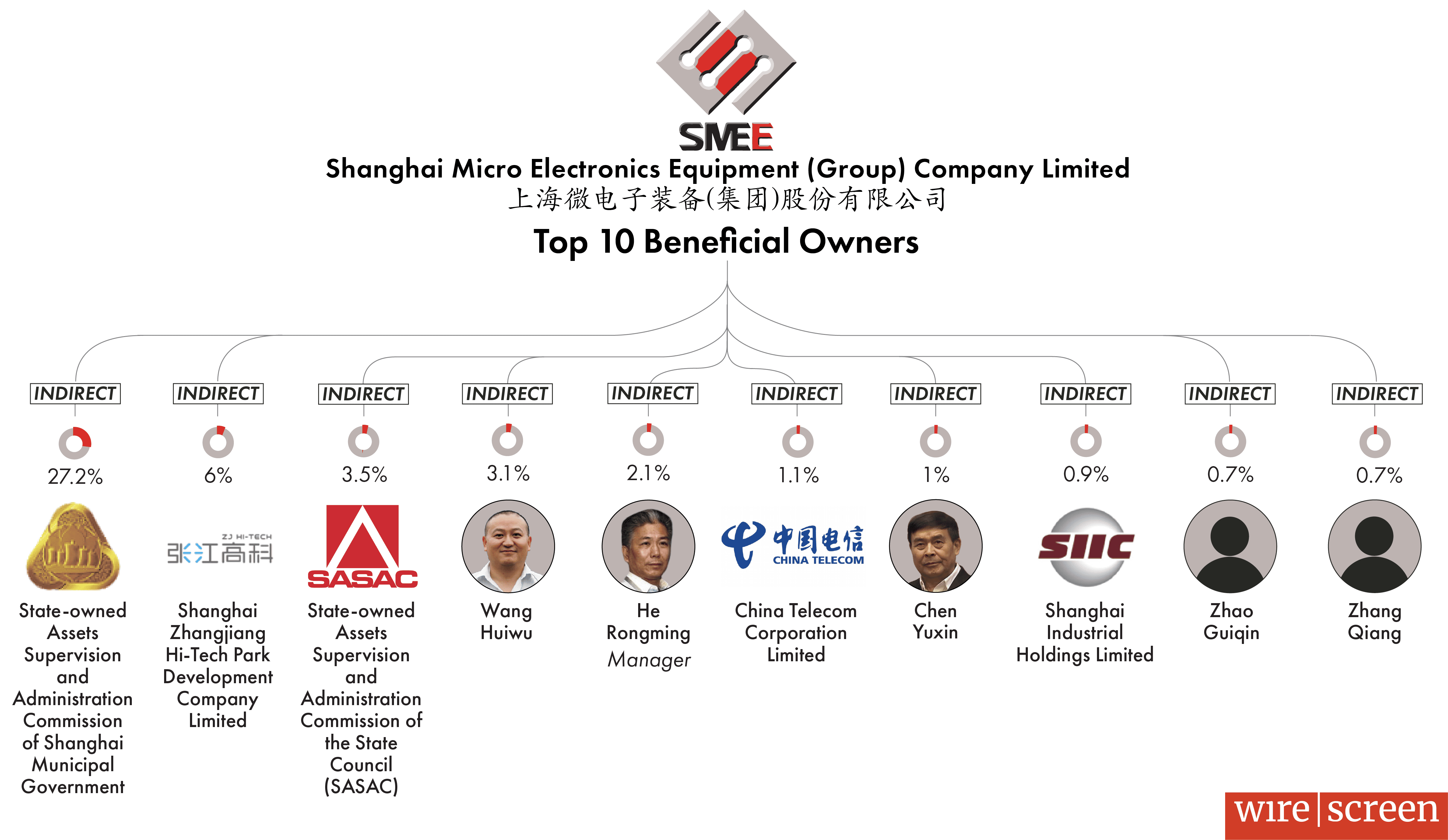
What is known about SMEE is that the company first had success in the chip packaging industry, which requires lower-end lithography machines to assemble and package chips into their final structures. Many Chinese media outlets have reported that SMEE now holds around 80 percent of China’s domestic chip packaging market share.
SMEE seems to have advanced to — and gotten stuck at — the next stage, however, which uses deep ultraviolet (DUV) light to make chips, rather than package them. DUV machines can essentially be broken down into three levels: the simplest use a krypton-fluoride (KrF) light source, the mid-tier use an argon-fluoride (ArF) light source, and the most advanced add an immersion component that uses ultra-pure water as a kind of lens to further refract the UV light.
Categories of Photolithography Tools
| Tool Type | i-Line | DUV | DUV (immersion) | EUV | |
|---|---|---|---|---|---|
| Light source | Mercury arc lamp | KrF | ArF | ArF | Tin Plasma |
| Year of first use in high-volume manufacturing (HVM) | 1990 | 1994 | 2001 | 2006 | 2019 |
| Resulting chip feature size | ≤350 nanometers | ≤110 nanometers | ≤58 nanometers | ≤38 nanometers | ≤13 nanometers |
Sources: Society of Photo-Optical Instrumentation Engineers, ASML
The top lithography machines are used to produce the chips powering cutting-edge AI applications, or the processors going into Apple’s latest phones, for example, and have low “chip feature sizes,” as measured in nanometers. (In the world of semiconductors, the lower the nanometer number, the better the computational power of the chip.) But lower-end lithography machines continue to pump out less advanced “legacy” chips, which are used in cars, consumer electronics, Internet of Things devices, and other applications.

According to data from Georgetown University’s Center for Security and Emerging Technology (CSET), SMEE sold a handful of KrF machines between 2011 and 2014, but then sold none between 2015 and 2019. SMEE still advertises an ArF machine on its website, but several sources expressed skepticism, saying these machines are likely prototypes, not commercial products.
Instead, according to CSET, nearly all of SMEE’s sales between 2009 and 2019 consisted of i-line machines (less advanced than even the lowest-end DUV tools), which at best can be used to produce 200–250 nanometer chips — chips, in other words, that were the industry’s cutting-edge in the mid-1990s. ASML’s most advanced tools, extreme ultraviolet (EUV) machines, by contrast, can print chips down to the 3-nanometer level.
In 2016, Beijing released a State Council document that tried to push for faster results, calling on China’s industry to “make breakthroughs in 28nm immersion lithography machines and core components.” Such breakthroughs would require SMEE to basically skip ahead two levels of engineering before mastering more basic tech — what many analysts describe as running before learning to walk.

An excerpt from China’s plan for science and technology innovation during the 13th Five-Year Plan, published July 28, 2016. Credit: State Council, CSET
But in June 2020, Chinese media outlets widely reported that SMEE was ready to race, and its new 28-nanometer machine would be available in late 2021.
“The move is a leapfrog breakthrough for China’s semiconductor industry, ” the state-affiliated Global Times gushed.
Then 2021 came and went, with no sign SMEE’s machine was being used.
Many Chinese companies like SMEE, says Lee, at East West Futures, “make claims that their products can do certain things. But it’s unclear how willing Chinese [chipmakers] are to use these products on the factory floor.”
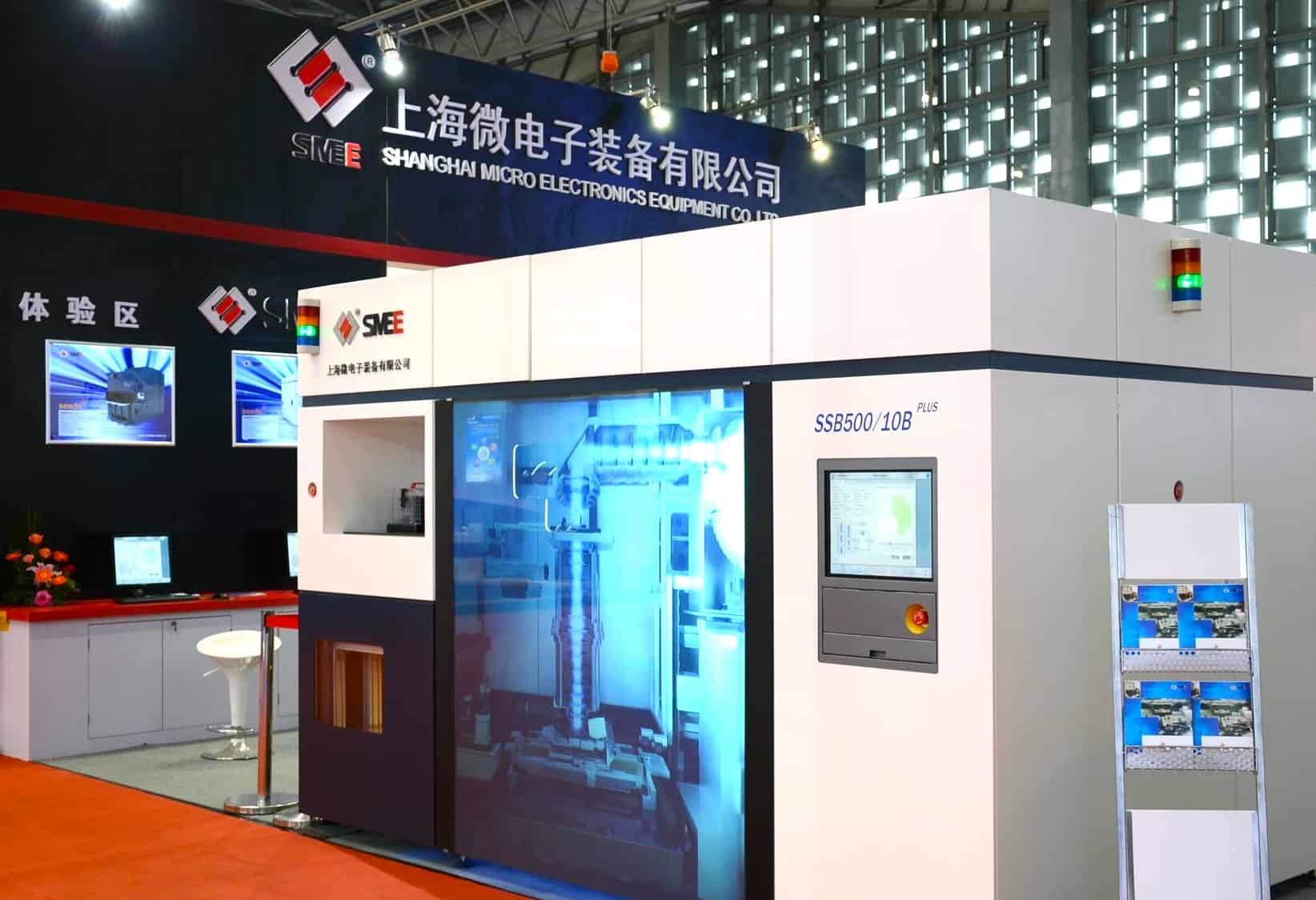
Credit: SMEE
For a brief moment last year, it appeared SMEE might have finally done it. In December, Bloomberg reported that one of SMEE’s shareholders had announced that the company developed an ArF immersion machine able to print down to the 28-nanometer process. But just days later, the shareholder, Zhangjiang Group, reportedly edited the WeChat post to remove the reference, stating only that “SMEE is committed to building advanced lithography machines.” (The post has since been taken down.)
It’s possible, notes Jan-Peter Kleinhans, head of Technology and Geopolitics at the German think tank Stiftung Neue Verantwortung, that SMEE is keeping its progress deliberately under the radar, to avoid scrutiny from Washington. “I don’t think that Chinese equipment suppliers right now have any incentive to show off their true technical capabilities,” he says.

But it’s also true that China’s chip manufacturers have been stocking up on ASML’s ArF lithography machines over the past year — another sign of the lack of confidence in SMEE. For years, the Dutch government has prevented ASML from shipping its EUV machines to Chinese firms, but in June last year, the Netherlands, under pressure from Washington, also restricted the flow of advanced DUV machines. In anticipation of the rule, China’s imports of ASML’s DUV lithography machines surged 1,000 percent in December 2023 compared to the previous year — representing $1.1 billion in trade.
While Chinese firms can still import some lower-end DUV machines, the tap has mostly turned off — further amping up the pressure on SMEE.
NETWORK EFFECTS

In its quest to be China’s ASML, SMEE appears to be taking an important page from ASML’s playbook.
Because Nikon and Canon have deep experience in optics manufacturing, the Japanese firms develop many components for their lithography machines in-house. But ASML is often credited for cultivating a massive network of over 5,000 suppliers.
“It’s been their key competitive advantage,” says Dan Hutcheson, Vice Chair at TechInsights, an online platform providing information on the semiconductor industry. “It’s allowed them to basically spread R&D costs out among the whole group of network suppliers.”
Many of those suppliers even develop custom parts for ASML’s more advanced machines, says Jeff Koch, an analyst with the consulting firm SemiAnalysis and a former engineer at ASML. “There are many, many specialty components that they source, often single source, because there’s no one else who can make this thing,” he says.

Like ASML, SMEE is taking an “out of house” approach. According to one of SMEE’s Chinese suppliers, U-Precision Tech, SMEE is “drawing on the development history of ASML” and designing overall lithography systems, “while the core subsystems are developed and produced by third-party manufacturers.”
This strategy is in line with China’s broader efforts towards tech indigenization and self-sufficiency, but it also comes with significant risks.

For starters, ASML is able to pull from a global supply base — to include light source technology from California, glass and mirrors from Germany, and inspection and measurement equipment from the Netherlands, to name just a few.
SMEE, by contrast, is attempting to source everything it needs from a much less mature ecosystem.
Beijing-based U-Precision Tech, for instance, was founded in 2012 and is working to develop wafer stages (which position the wafer while it is being exposed to the UV light) and accompanying precision measurement and motion control systems for SMEE. But in a December 2022 exchange filing, U-Precision acknowledged the accuracy of its instruments is still lacking, and that it had only sold a handful of products to SMEE since 2017. The key performance metrics, the filing reads, “are still far behind those of leading international companies such as ASML.”

If SMEE can some day advance to EUV lithography, the realm of potential suppliers gets even more complicated. In an ASML EUV machine, molten droplets of tin are hit first by a laser pulse that flattens them into a disc, and then a second laser pulse vaporizes the droplet to create an EUV light-emitting plasma. That process repeats 50,000 times per second.
ASML uses lasers made by the German firm Trumpf, and Manuel Thoma, a spokesperson for Trumpf, told The Wire China that the EUV lasers themselves are a small supply chain miracle.
“Alone, the laser system has more than 550,000 parts, weighs more than 17.5 tons, and is really, really complex,” he says.
SMEE’s Chinese suppliers have been looking for shortcuts wherever they can, including sourcing from German and American companies. The 2022 filing from U-Precision Tech shows that nearly 37 percent of the company’s procurements in 2020 came from overseas. Products from the U.S., Germany, Japan and other countries, the document says, “are relatively mature and can better meet the company’s production needs.”
But this process of shopping abroad is much more difficult now thanks to the sweeping “end-use” export controls that the U.S. imposed on China’s semiconductor industry in October 2022. Even if a company — for example, U-Precision — is not directly named on the Entity List, U.S. companies and citizens are forbidden from doing any business that could aid China’s semiconductor industry toward production of advanced chips.
The Wire China found no evidence U-Precision was still importing U.S. products. One of SMEE’s other suppliers, Focuslight Technologies, also noted procurements from U.S. companies in pre-2022 filings, but none of the named U.S. companies provided comment on whether their exports have been affected by the export controls.
They most likely have been, says Kevin Wolf, a former Commerce Department official who now specializes in export controls at the law firm Akin Gump Strauss Hauer & Feld.
The U.S. government’s “all-of-the-above strategy,” he says, has been “really quite comprehensive at coming up with different ways in which to stop all the inputs for producing in China either semiconductor manufacturing equipment or advanced node semiconductors.”
Although the U.S. has gone further than other countries, essential exporters in the supply chain may be moving in the same direction. German firms Trumpf and Suss MicroTec, both of which make products for lithography processes, told Reuters last October they were experiencing delays getting exports to China approved by the German government.

If SMEE’s suppliers can no longer import the products they need, one logical strategy might be to import the expertise they need. China’s national chipmaker, for instance, SMIC, is notorious for poaching high-profile Taiwanese engineers with experience at the leading chipmaker TSMC.
But analysts note China’s talent conundrum is much more difficult for lithography equipment.
“Because of the shared language, SMIC can easily scoop up talent and personnel from Taiwan if they want,” says Kleinhans, at Stiftung Neue Verantwortung. “With lithography, the ecosystem is really in Europe and in Japan.”
And, for the foreseeable future at least, it seems likely to stay there.
SHORTCUTS AND LOOPHOLES?
Although SMEE and its suppliers are facing a China-versus-the world scenario, there are a few reasons not to write off the Shanghai firm’s efforts in lithography just yet.
For one, SMEE has the advantage of not being a first mover — it knows what kinds of machines are commercially viable as well as some details on how other firms have worked out the kinks.
Chinese engineers also won’t have to worry about creating machines that are viable for export. ASML’s latest $300 million machine is not just an engineering marvel, it also has to make the, say, 5,800-mile trip from the Netherlands to TSMC’s plants in Taiwan. Transporting one of the machines to an Intel facility in Oregon reportedly involved a cargo plane, 250 crates, and 250 ASML and Intel engineers working for six months to assemble and calibrate the machine for use.
Removing such significant transport hurdles has spawned some novel ideas in China, such as an experiment to create an EUV light source from a particle collider the size of two basketball courts.
The experiment, conducted at Beijing’s Tsinghua University, could give China an alternative route forward on EUV lithography, says Xiaomeng Lu, Director of Geotechnology at the consulting firm Eurasia Group. It would, of course, be a multi-year process to move from experimentation to commercialization, but she says, “essentially, there are some early signs of that technological route working in the future.”

Another technology that could sidestep conventional DUV and EUV lithography is known as nanoimprint lithography. Instead of using light to carve circuit patterns, this machine simply “stamps” chip designs onto wafers. Japan’s Canon hopes to provide machines able to print down to the 5-nanometer node, rivaling ASML’s EUV process and potentially opening another pathway for China to explore.
China also has a special interest in advanced packaging techniques (where chips are assembled in new ways to make them more efficient) as well as a new technology called photonics (where photons, instead of electrons, are used in some parts of computing processes, further increasing efficiency). Such innovations could allow Chinese-made chips to get more juice from their relatively weak squeeze.
I’m convinced that in 20 years time, China will have a more competitive lithography company than SMEE is today. And that could either be SMEE, or people [in China] could decide SMEE is a dead horse.
Jan-Peter Kleinhans, head of Technology and Geopolitics at the German think tank Stiftung Neue Verantwortung
Indeed, Chinese chipmaker SMIC has already proven innovative strategies can achieve results: By using DUV machines typically associated with chips in the 14–28 nanometer range, SMIC successfully produced 7 nanometer chips for a Huawei cell phone. Analysts think SMIC used a technique called “multi-patterning,” which is basically when a chip goes through the DUV machine multiple times to get more intricate patterns.

“China has all the incentive to be a little bit less dependent on transistor shrinking than everybody else, because they lack access to cutting-edge [chipmaking equipment],” says Kleinhans. “On a global industry level that creates an interesting dynamic where we might see more attention from China on photonics, on advanced packaging, on everything else that is popping up, as strategies to improve the innovativeness of the final chip.”
It is not a long term solution, however, especially as Western governments continue to plug loopholes. DUV machines already in China — like the one SMIC used for the Huawei chip — still require careful maintenance and software updates provided by ASML. Contracts between ASML and many Chinese customers provide for ASML servicing through 2024, at which point licenses must be renewed by the Dutch government.
“Of course, we are going to only service those things for which we have licenses,” says ASML spokesperson Ryan Young, adding that the firm has already stopped servicing some DUV machines at China’s most advanced chip factories after failing to receive licenses last November.
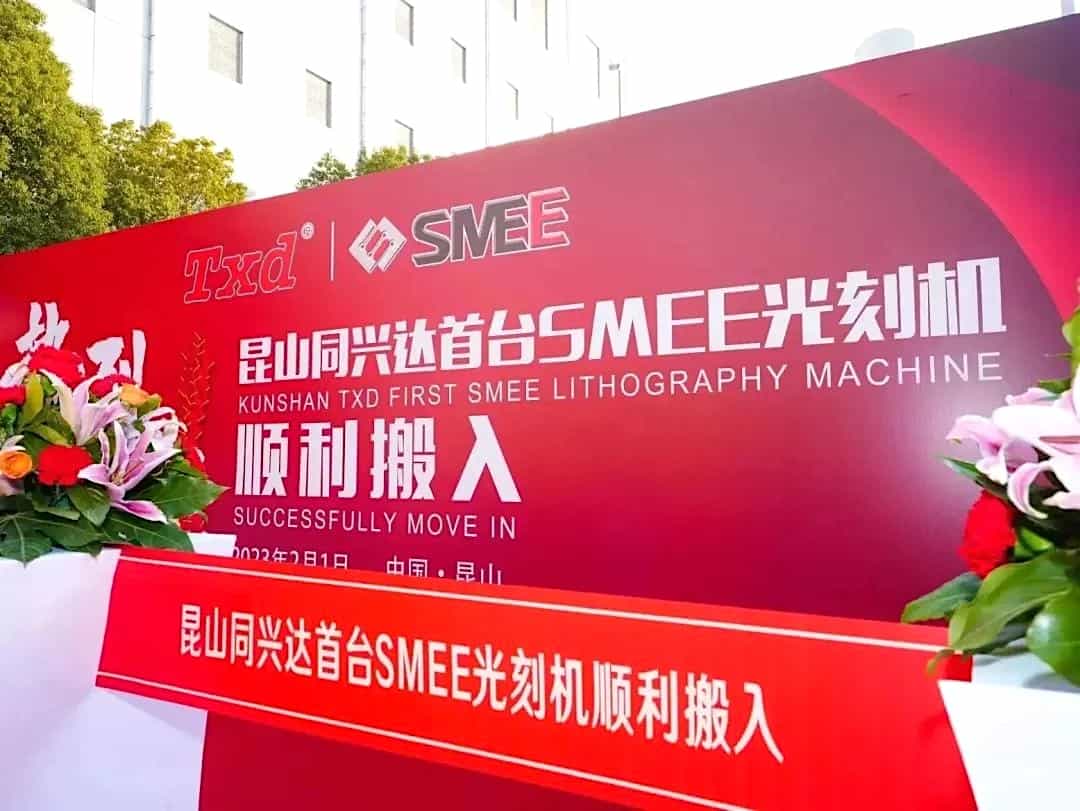
Chinese chipmaking firms, in other words, are living on borrowed time. Any shortcuts Chinese firms develop, notes Koch, the former ASML engineer, are “complementary; they’re not a substitute.” When it comes to competing with the technologies of their Western counterparts, he says, “there’s really not a substitute for scaling. Eventually they’ll need EUV to do that.”
China-made chips will continue to lag Western ones for years, and potentially decades, according to some estimates. But Triolo says that China’s chip ecosystem is maturing quickly now, in large part because companies like Huawei, SMIC and now SMEE are being forced to collaborate in ways they didn’t have to previously.
“In the West, there’s a very close working relationship between the tool makers and the [chipmakers]. They’re kind of like frenemies,” he says, since companies like Applied Materials both work and compete with companies like ASML. “Now in China, the whole industry is sort of coming together in this way. We’re seeing this integration of the tool sector with the chipmakers — and that’s huge. So it’s a mistake to see SMEE in some sort of isolation.”
That is, as long as SMEE can keep up. As Kleinhans notes, SMEE needs to prove itself quickly if it wants to stay in the game. “I’m convinced that in 20 years time, China will have a more competitive lithography company than SMEE is today,” he says. “And that could either be SMEE, or people [in China] could decide SMEE is a dead horse.”

Eduardo Jaramillo holds a Bachelor’s degree in History and East Asian Studies from Bowdoin College, and a Master of Arts in Asian Studies from Georgetown University. His work has appeared in The China Project, South China Morning Post, and The Diplomat, among others.


